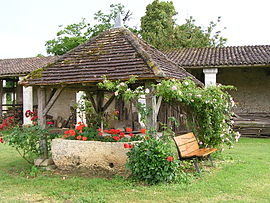
Charente is a department in the administrative region of Nouvelle-Aquitaine, south western France. It is named after the river Charente, the most important and longest river in the department, and also the river beside which the department's two largest towns, Angoulême and Cognac, are sited. In 2019, it had a population of 352,015.
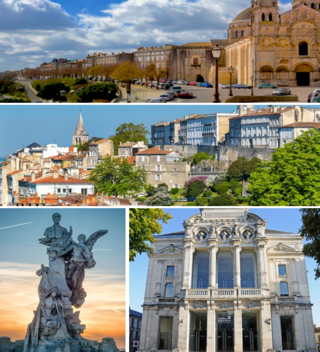
Angoulême is a small city in the southwestern French department of Charente, of which it is the prefecture.

Jean-Louis Guez de Balzac was a French author in Baroque Précieuses style, best known for his epistolary essays, which were widely circulated and read in his day. He was one of the founding members of Académie française.

Aubeterre-sur-Dronne, commonly referred to as Aubeterre, is a commune in the Charente department in the Nouvelle-Aquitaine region of Southwestern France.

Ille-sur-Têt is a commune in the Pyrénées-Orientales département in southern France.

Abzac is a commune in the Charente department in the Nouvelle-Aquitaine region of southwestern France.

Les Adjots is a commune in the Charente department in the Nouvelle-Aquitaine region of southwestern France.

Agris is a commune in the Charente department in the Nouvelle-Aquitaine region of southwestern France.

Aignes-et-Puypéroux is a former commune in the Charente department in the Nouvelle-Aquitaine region of southwestern France. On 1 January 2017, it was merged into the new commune Montmoreau.
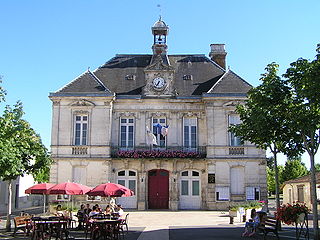
Aigre is a commune in the Charente department in the Nouvelle-Aquitaine region of southwestern France.

Alloue is a commune in the Charente department in the Nouvelle-Aquitaine region of southwestern France.

Ambérac is a commune in the Charente département, region in the Nouvelle-Aquitaine region of southwestern France.

Ambernac is a commune in the Charente department in the Nouvelle-Aquitaine region of south-western France.

Ambleville is a former commune in the Charente department in the Nouvelle-Aquitaine region of southwestern France. On 1 January 2022, it was merged into the new commune of Lignières-Ambleville.
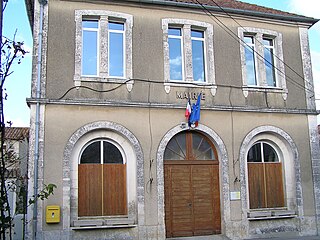
Anais is a commune in the Charente department in the Nouvelle-Aquitaine region of southwestern France.
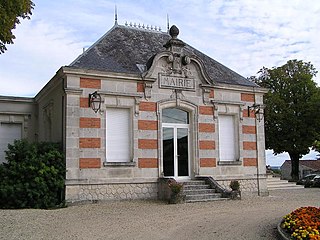
Angeac-Champagne is a commune in the Charente department in the Nouvelle-Aquitaine region of southwestern France.

Baignes-Sainte-Radegonde is a commune in the Charente department in the Nouvelle-Aquitaine region of south-western France.
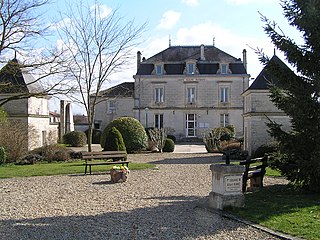
Brie is a commune in the Charente department in southwestern France.

Saint-Eutrope is a former commune in the Charente department in southwestern France. On 1 January 2017, it was merged into the new commune Montmoreau.

Aulnay, commonly referred to as Aulnay-de-Saintonge, is a commune in the Charente-Maritime department, region of Nouvelle-Aquitaine, France.
